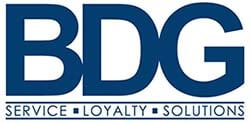In two recent cases, courts considered the actions of private parties in determining that public entities were not liable for inverse condemnation or dangerous conditions of public property. In City of Oroville v. Superior Court, 2019 Cal. LEXIS 5950, the court clarified that inverse condemnation is not “strict liability.” “Instead, a court reviewing an inverse condemnation claim arising from sewage overflow must consider whether the damages to private property were the direct and necessary effect of the inherent risks posed by the public improvement as deliberately designed, constructed, or maintained. And in a case like this, a reviewing court must also assess whether the damages were the result of a risk created not by the public improvement, but by the acts of the private property owner. A causal connection between the public improvement and the property damage alone is insufficient to sustain a finding of inverse condemnation liability.” Id. at 28 [fn omitted, emphasis added].
In Oroville, the Supreme Court reversed the court of appeal’s ruling that the City of Oroville was liable in inverse condemnation for property damage suffered by a dental practice where raw sewage backed up onto the property, holding that the dentists’ failure to install a legally required backwater valve on their premises could have averted the damage and the City was not liable for the property damage. The trial court and the court of appeal were persuaded by the dentists’ argument that the City was liable on the theory that the damage was caused by the sewer system’s failure to function as intended. Both lower courts rejected the City’s response that the damage occurred because the dentists failed to install the backwater valve that would have prevented sewage from entering their building in the event of a sewer main backup. In reversing, the Supreme Court reiterated that to succeed on an inverse condemnation claim, a plaintiff must show that the damage to private property was substantially caused by inherent risks associated with the public improvement, which the dentists were not able to show in this case given their failure to install the required backwater valve.
In another win for public entities, the appellate court upheld the jury’s decision that a public entity was not liable for severe injuries and death from a car accident despite the jury finding that the public property did contain a dangerous condition. In Fuller v. Department of Transportation, 2019 Cal. App. LEXIS 768, a motorist with a willful and wanton disregard for the safety of others, recklessly tried to pass a tour bus on State Route 1, and struck the car driven by plaintiff head-on. Plaintiff was severely injured and his wife was killed. The jury returned a special verdict that a dangerous condition of public property existed but did not “create a reasonably foreseeable risk that this kind of incident would occur.”
(Id. at 4.) In upholding the verdict, the court explained that the jury could find that there was one and/or two dangerous conditions, but it had nothing to do with the collision or the collision was caused by a reckless driver. The court rejected plaintiff’s contention that once the jury finds an unsafe condition of public property, the public entity was at least 1 percent at fault and a reckless driver could not be 100 percent at fault.
The Court of Appeal confirmed that a public entity is not liable for an injury caused by a dangerous condition of public property unless the injury was proximately caused by the dangerous condition and the dangerous condition created a reasonably foreseeable risk of the kind of injury which was incurred, which was not the case where a reckless driver caused the accident.
These rulings are good news for public entities because it signals that courts are weighing the actions of private parties in assessing the liability of public entities in eminent domain and dangerous condition of public property cases. Moreover, these cases signal that courts are moving away from the strict liability theories in finding public entities liable and are instead focusing on principles of causation.
Should your entity require further information regarding either of these cases, or like to discuss a similar legal matter, please contact Brian J. Bergman at 310-470-6110 or [email protected].

